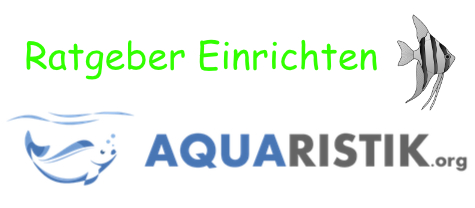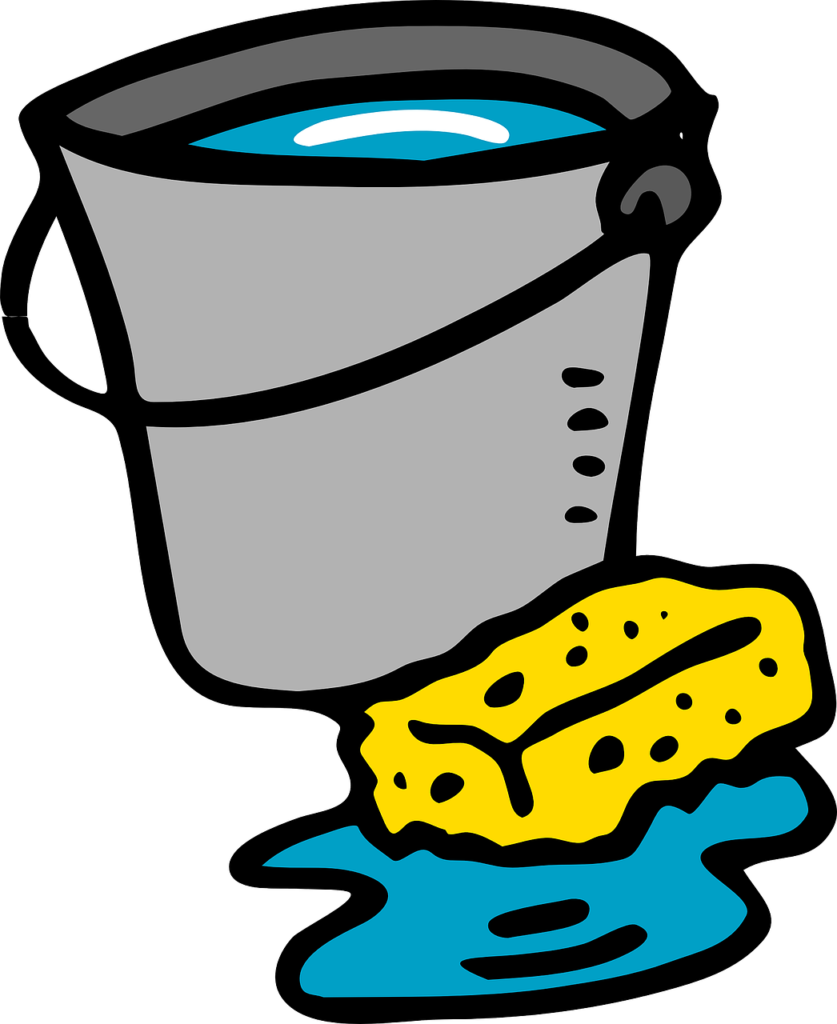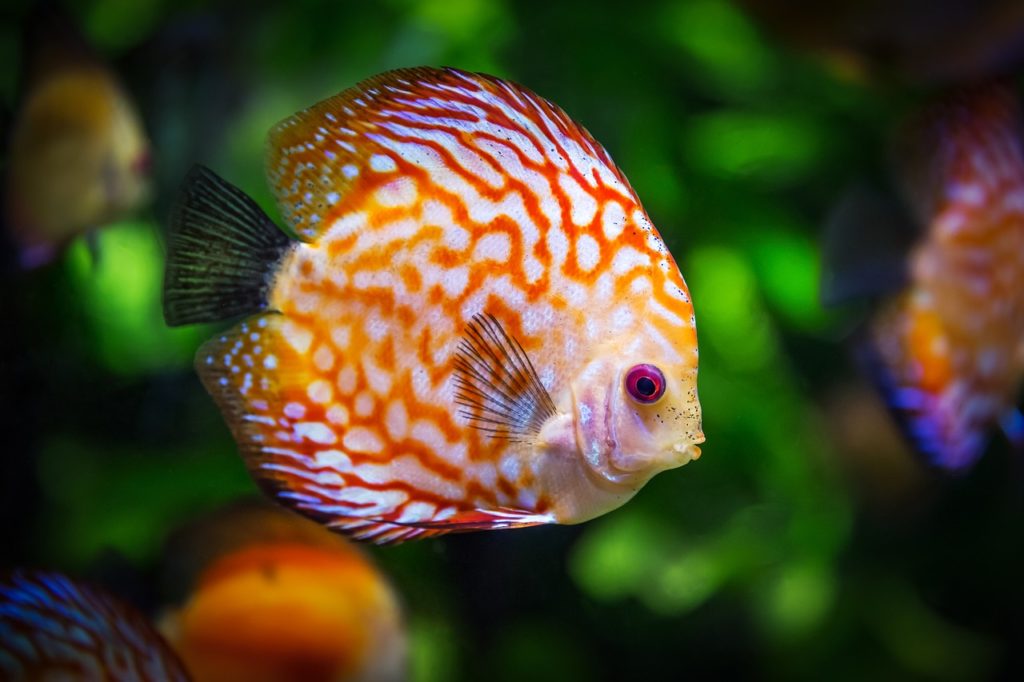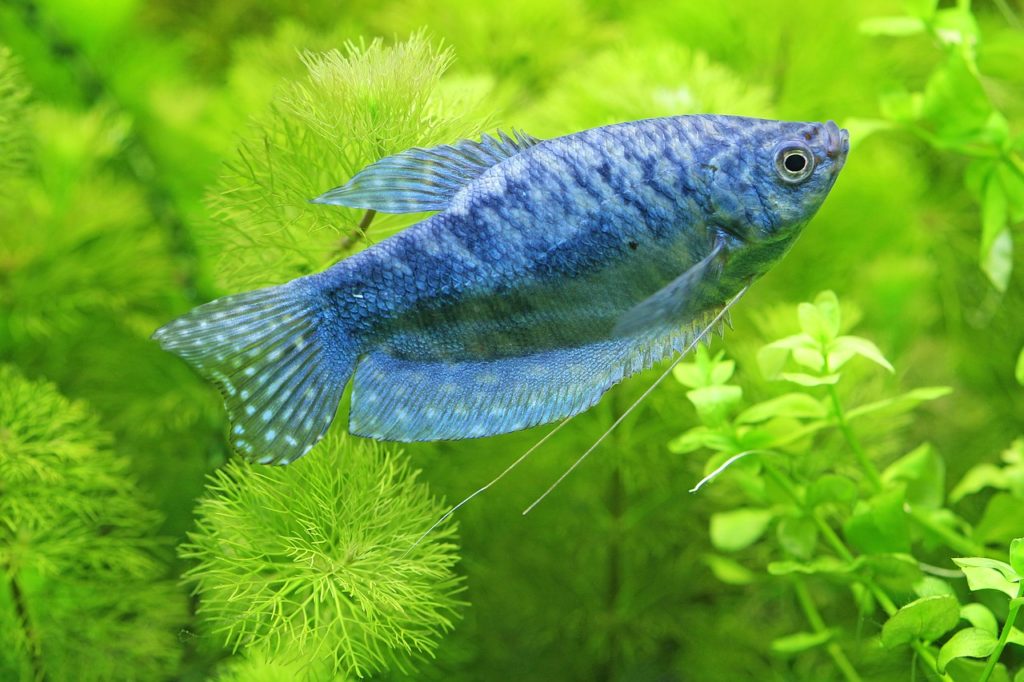Table of Contents

10 steps to set up an aquarium
After we have already completed the planning and setup, it is now time to fill in the water. Unfortunately, you have to be patient again, because the fish can only be used after the running-in phase. But when the time comes, then it is also time to take care of the care. There is also important information in the 3rd and last part of the series.
The first will be out soon Setup Ebook an aquarium with us. But now enough of the words. We want to start with the detailed planning.
Set up the aquarium Fill with water
Now it's getting exciting, because now it's finally getting to the point Aquarium to make it what it actually is. Without Water an aquarium is actually nothing. But there are also a few things to consider. This step is about that letting in the water.
Above all, you should try to get in the water as slowly as possible. The more you whirl up sand or gravel here, the cloudier the water will be at the beginning. This is going away, but there are still some tips for getting in the water. But let's start with the water itself. Here you have to consider which fish will come into the tank later and what values of hardness and co they can tolerate.
prepare water
For fish with low demands it is sufficient to use tap water. This can then be adjusted later in the running-in phase. But you should try to adjust the temperature to some extent. This means that the heating needs less energy and the plants could otherwise get a shock.
We recommend filling in the water to around 25 degrees. This is in an area that most aquatic plants tolerate well.
Pour in water
Let's now fill in the water. Basically, this can be done in different ways. It is best to get a water hose that you can connect to the tap, because transporting 200 or more liters with a watering can or bucket can be quite tedious.
With the water hose and a built-in shut-off valve you are much more comfortable here. This can also be used later for regular water changes.
Let's take a look at the watering can method first. There you should use the attachment of the sprinkler at the front, because that way the big jet is distributed and makes many small ones out of it. In the aquarium we put a bowl or a plate in which the water is drained. In front of there it flows very gently into the pool. Only a little dirt and sand is whirled up and you quickly have clear water.
This is also very easy to do with the hose. Again, you should not let the water flow into the plate under full pressure. Take a little more time for this.
Fill the tank gradually
Gradually fill the tank. First up to a third. Then they check the tightness again and also the position of the furnishings and plants. Only if everything is OK should you continue. Repeat this step one more time until the tank is finally full. Most aquariums have specific markings on how far water can go in. It is also important to adhere to these.
When the water is filled, you can also put the filter into operation. In addition, you have to turn on the heating now so that the water cannot cool down. Light is also needed now to stimulate photosynthesis. This is the only way the plants can grow and thrive.
treat water
The water that comes from the water pipe should still be treated. There are various chemicals available for this purpose in specialist shops or on the Internet. These are added to the water according to the manufacturer's instructions. It is not yet ready for the fish to be stocked, but a lot of toxic pollutants are broken down from the tap water.
Of course you can already soften your water with an osmosis system. The hardness such as carbonate or the total hardness can be reduced with it. The PH value can also be adjusted now. Many also add rainwater, since this water is usually softer than that from the tap. However, we cannot recommend this, because there are other types of dirt in the rainwater that do not belong in the aquarium.
In the next part we will explain exactly what the composition of the water is and what should be taken into account when running in.
Setting up the aquarium Driving in
Now that we have that Aquarium with Water have filled it goes to them Run-in phase or the retraction of the aquarium. It sounds like a new car. You can't always start at full throttle, you have to break in the new engine first. It is similar when retracting an aquarium. Before fish can enter the water, the conditions for this must be created and they must then also pass a practical test.
But what does retract actually mean and what happens when you do it?
Basically, it means waiting about 14 days first. Only then can the first stocking of fish be considered. However, this period depends on other factors. Certain things that flow into the biological cycle play a role here.
In the first few days after starting the aquarium, there are few bacteria in the filter. These bacteria have to form first. One may now ask why one needs these bacteria at all. The bacteria are there to filter and break down pollutants from the water. Plant residues and fish waste also have to be broken down and converted again. A kind of garbage disposal for the aquarium. Now let's take a look at the connections.
Wait for the nitrite peak
When the aquarium is started, there are still no bacteria in the filter that could ensure that nitrite could be broken down. The nitrite is life-threatening for the fish. Nitrite is formed from a combination of ammonia and ammonium. This nitrite can be broken down by bacteria if they exist. These bacteria are called Nitrobacter. At the beginning, however, this does not exist. It is therefore necessary to wait until the nitrite peak has been reduced.
This can easily be determined with a nitrate test. Measure the nitrite in the water every day and you will find that it builds up more and more up to a certain limit. Then it gets less again and the nitrite peak is done. Only then can you start thinking about putting in the fish.
If the nitrite is broken down by the nitrobacter bacteria, nitrate is produced, but this is not dangerous for the fish. However, this nitrate can also become a problem because it is only partially broken down by plants. Therefore, a partial water change in the tank must be carried out regularly. But more on that in a separate article.
Of course there are a lot of other water values that you should observe and analyze during this time. In addition to the PH value, the hardness from total hardness and carbonate hardness can also be observed. pH, kH or gH are values that can be determined with simple tests. These can also change in the first few days and weeks.
So you have to wait until the values level off and the nitrite peak is over.
Help with chemistry
Of course, there are also plenty of chemicals for immediate stocking with fish today. There you will find remedies that you put into the water every day to prevent the dangerous nitrite from forming in the first place. There is also a starter aid for the filter where there is nothing else like the bacteria Nitrobakter. These accelerate the development of the bacteria. However, we still recommend waiting. If you make mistakes here, the fish that you bought expensively and used right away can quickly die.
The use of used filter media can also be done, but there is also a great risk that you might get other things into your newly set up aquarium. It is still best to wait until nature takes care of everything by itself. Patience pays off here.
Finally, a note on the exact duration of running in an aquarium. You have to include different things here. It depends not only on the size of the tank though, but also on the number of plants and also on the filtration. We therefore recommend measuring the values of nitrite here again and again.
What happens during the break-in phase?
For the aquarist, these are rather unspectacular days. Basically, all you have to do is wait and see. It also doesn't help to make changes in the pelvis every day. But if these are still necessary, then it is better to do it now, as when the fish are deployed. Now you don't bother anyone.
A word about the plants. These can quickly wither in the first few days and not look very nice. But you shouldn't panic, because this is a completely normal process. First the plants have to be established before they can grow properly.
During this time, leaves may change color or fall off. Of course, you should take them out of the tank.
Set up the aquarium and put in fish
Now the day is finally coming when the first Pisces into the pool can come. But here, too, there are a few things to keep in mind. In our 9th part of the series we want to present these things. From checking the water quality to stocking up.
Water quality control
Before you can even think about putting in the fish, you have to be sure that the nitrite peak is over. See also the part with the water filling. There we describe what is behind it.
But not only the nitrite peak and value is important, but also the other water values. There is no point in having a PH value of more than 8 and then buying fish that do not tolerate it at all. Here you have to be careful what you do. Therefore, check all values again and write them down. Then you can go to the dealer or wholesaler to buy the fish.

amount of trimmings
Let's just get to the amount of fish. For example, how many fish are allowed in my 200 liter aquarium? Basically, this is calculated quite simply. There is a formula that many use. This states that there must be one liter of water for every 1 centimeter of fish length. But this formula should only be used as a rough guide, as there are many other factors that can determine this.
Fish grow and if you buy some, they are usually still small. You have to take that into account when using the formula. Also, a 200 liter aquarium does not have 200 liters of free space for the fish. There is still a lot of equipment to remove here. It can quickly happen that there are only 150 liters left.
What else should you consider when choosing the quantity and choice of fish:
- Fish live in different water layers and depths
- Do not only occupy the bottom or the middle, but also the water surface or the upper third with fish
- consider corporate forms
- For example, angelfish live in pairs
- Schooling fish should be kept in larger numbers
- Watch out for territorial fish
As you can see from this list, a lot of things count towards how many fish are in a tank. Each fish has a profile that you should read carefully. Only then can you go shopping.
Gradual stocking of the fish
If you start with the stocking, you should do it in steps. It makes no sense to buy all the fish at once and then immediately put them in the tank. Here it is always step by step.
Here are the tips:
- At first only introduce a few algae-eating fish
- Most of these are living on the ground
- Only then use rather insensitive fish
- Insertion always depends on the habitat and layer in the water
- Pay attention to the adaptation of the fish
- Take your time
- Finished trimming only after weeks
use fish
Now let's get to the use of the fish in general. Anyone who thinks they can simply let these out of the transport bags into the water is wrong. It is important to be very careful here. The fish could quickly get a shock. Every water is different and the animals are also stressed by the transport. But now, of course, to the tips on how to slowly get the fish used to the new conditions.
First of all, when transporting them from the specialist shop, you have to be careful that the containers do not cool down too much and, worse, break. As a rule, the fish are packed in such a way that there is enough oxygen in the bag and the fish can withstand a certain amount of time. However, if you are on the road for a longer period of time, a special oxygen supply must be provided. You should get oxygen there. Suitable bottles are also available in specialist shops.
But if you're not on the road longer than about 45 minutes, then it shouldn't be a problem. However, please state your exact transport time in specialist shops.
When you get home, you start unpacking the fish. First, the bags are placed in the water so that the temperature of the water does not drop any further. Then we slowly get used to the new water.
To do this, you always fill some water from the aquarium into the transport bag. In this way, the transport water is gradually mixed with the water from your own aquarium. However, this process should not be completed in 5 minutes, but you should take some time. Yes, the slower the acclimatization happens, the gentler it is.
If you have everything done and the fish are ready to come into the aquarium, then it's time to move them gently.
Everyone has their own strategy here. In any case, we avoid simply letting the water and the fish into the pool. You can get possible diseases from foreign water into your aquarium. That's why we recommend catching the fish and relocating them.
If you already have fish in the aquarium, you should feed them beforehand until they are full. Otherwise it could happen that the new, possibly quite small fish are regarded as food and eaten right away.
Here is an overview of the individual steps:
- Gentle transport
- note the temperature
- Possibly supply oxygen
- Slow water exchange
- Catch fish gently
- Release only after one feeding
The first days with new fish
The first days after stocking are the most beautiful. There is still a lot to see there and that is exactly what you should do. Watch your fish closely and study their behavior. Are there turf wars? Do fish chase each other? Is everyone still up? Are there already dead?
Especially with a new stock it can happen that one or the other fish dies. This often comes from the rigors of moving and transport and also from the different water qualities. Don't worry, this can happen again and again.
However, if a large number of fish die in the first few days, it is important to check the water values again and again. There could be problems here. Good dealers will also help you here and try to find the problem together.
Aquarium set up care
The Aquarium runs and the fish are all doing well. With that, the actual Aquarium setup completed. But if you buy an aquarium, you still have a lot of work to do later. This includes regular water changes and other maintenance work. We want to give a small overview of the recurring maintenance here.
At the beginning, however, the hint that often occurs, especially with beginners. Don't do too much, because that will upset the balance. Less is often more here too.
partial water change
The partial water change should not be missing in any care plan. It is certainly one of the most important things. But how often should you change your water and how much? It is not possible to give general answers to these questions here.
We have had good experiences with a 14-day water change. We always take about 25 percent of the water from there. When treated with medicine or with certain types of dirt such as algae, it can sometimes happen that more water comes out of the pool. However, you should not simply throw away the water, because it is excellent for watering plants. So they even have some fertilizer.
Clean filter
The filter also needs to be cleaned from time to time. Here we do not recommend an exact plan, but simply as needed. You can feel quite quickly when the performance decreases. Then you should look at the filter and all the associated hoses.
At the beginning of the running-in phase, you must not wash the filter, because that would wash out the important nitrobacter bacteria. So start washing later.
Replace filter cartridges
The filter cartridge should also be replaced from time to time. Again, at our discretion, there is no fixed time frame. If the filter medium is becoming denser and no longer lets through enough, then it should be replaced. Even if it is damaged, it should be replaced.
With a new filter floss or a new filter medium, it is advisable to use some filter starter. This means that the bacteria are restored more quickly.
control values
Again and again she should check all values later. Especially, of course, if you find irregularities. If everything is fine, you should take this time once a week.
Replace lights
The lights in the aquarium also lose their power. Therefore, these must also be replaced at regular intervals. A value is usually specified here by the manufacturers. We recommend doing this once a year.
cut back plants
Plants grow and can very quickly take away the space the fish need. It can also happen that the lower layers get too little light. Then it's time to cut back the plants. This should always happen when you have noticed an extraordinary growth. We recommend using the time of a water change here.
Vacuum up sludge
Even the Mulm has to get out of the aquarium. Here are good ways to remove it. Here, too, we use a sludge vacuum cleaner with which the water change is also carried out at the same time. Mulm is deposited through the faeces of the fish, but also through plant remains. If you don't remove it, not only does it look bad, but the floor gets less and less light and becomes completely dirty.
clean windows
What's an aquarium if you can't see through the panes. Therefore, these also belong in the cleaning plan. For cleaning the outside, proceed as you would a window, and there are various options for the inside. Window cleaners are available in specialist shops in different versions. Be it with a sponge or with a razor blade. Each has its advantages and disadvantages.
There is still a lot more that belongs to an optimal aquarium care.








